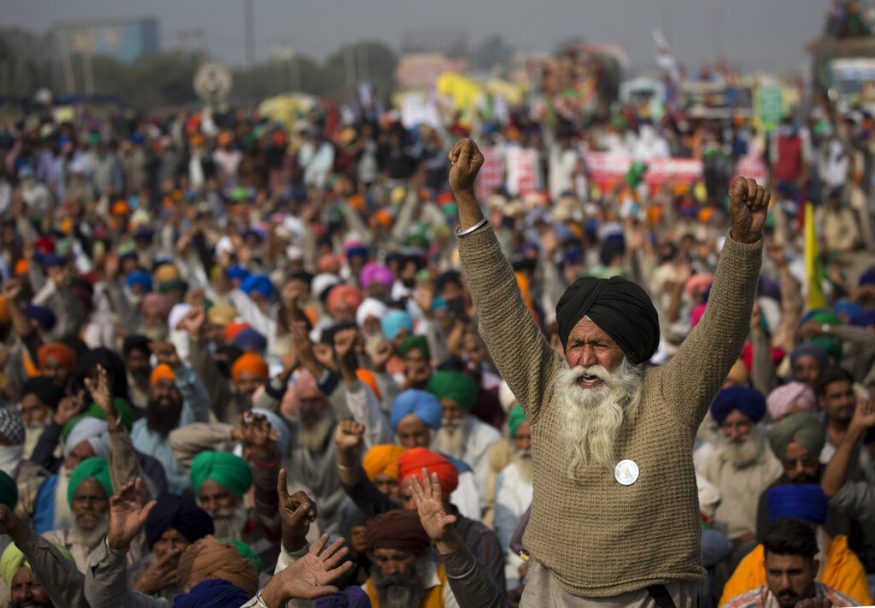Farmer Protests in Northern India: What Do We Need to Know
India falls under the category of a developing country with about 60% of the population deriving its livelihood from agriculture and related activities. The COVID-19 induced economic turbulence has heavily dented India's economy. The country estimated a negative GDP growth but the agriculture managed to register a 3.4% growth during the same time period. The country also plays a major role in exports of agriculture in the international market. In FY 2019, the country exported agricultural and processed food products worth USD 38.49B to more than 100 countries.
Regulated Agricultural Sector
Agricultural markets in India were mainly regulated by the state Agriculture Produce Marketing Committee (APMC) laws. The main purpose of the committee is to:
- regulate the trade of farmers’ produce by providing licenses to buyers, commission agents, and private markets
- levy market fees or any other charges on such trade and provide infrastructure within their markets to ease the trade.
Attempt to Deregulate: Farm Bill 2020
In September 2020, three laws were passed under the “Farms Act 2020” by the Parliament of India to deregulate the agriculture sector in the country. The acts are an attempt to bring about a gigantic structural change in the agricultural sector. The objective is to encourage corporate investments in the ecosystem and offer farmers independence to operate and trade outside the APMC.
1. The Farmers’ Produce Trade and Commerce (Promotion and Facilitation) Act, 2020
This act provides an opportunity for the farmer and traders to sell and purchase agricultural products through alternative trading channels. It aims to promote efficient, transparent, and barrier-free inter-State and intra-State trade. It allows the trade outside the physical premises of markets notified under State Agricultural Produce Marketing (APMC) legislation. The act allows APMC to function and compete with these alternate platforms. It allows the farmers to sell their products independently and escape the monopoly cartel at the APMC.
2. The Farmers (Empowerment and Protection) Agreement on Price Assurance and Farm Services Act, 2020
The act empowers the farmers to engage with processors, wholesalers, aggregators, large retailers, exporters, etc., at an independent level without the interference of the state authorities.An opportunity will be given to the farmer to sign a deal with the buyer even before the production takes place. This gives the farmer a price assurance even before sowing of crops and the farmer is entitled to the prices over and above the minimum price. The act serves as an opportunity to transfer the risk of market unpredictability from the farmer to the sponsor and shields the farmer from price volatility in the market.
3. The Essential Commodities (Amendment) Act 2020
The stock limits on storing essential commodities are removed and are only allowed to be regulated under extraordinary circumstances. The imposition of any stock limit on agricultural produce includes war, famine, extraordinary price rise, and natural calamity of grave nature, or a price rise. Essential commodities include foodstuffs, including cereals, pulses, potatoes, onions, edible oilseeds, and oils.

Why are the Farmers Protesting
Why are the Farmer Unions Protesting
The passing of the acts has created uncertainty and raised several doubts in the minds of the farmer unions which are mainly operated by the middlemen. Most of the protests are centred around the states of Punjab and Haryana in North India which are mainly wheat and rice-producing regions. The unions are demanding a complete withdrawal of three laws which deregulate the sale of their crops.
- The unions are concerned about the removal of Minimum Support Price (Price guaranteed by the government to the farmers for grain crops like rice, wheat corn, etc) in the long run and result in a lower price for the farmer. However, the government is reassuring the continuance of Minimum support price (MSP), APMC registered markets and lucrativeness of the new farm agreements.
- It is feared that the government will shut down the Agriculture Produce Marketing Committee which would leave only cooperatives and private firms in the sector. On the other hand, the main objective of the laws is to free the farmers from the clutches of middlemen who operate in the government regulated markets and control the prices.
- Farmers are skeptical that contract farming will give an unfair advantage to the sponsors and farmers will not be able to determine prices. It has raised several doubts about how small farmers will be able to practice contract farming.
- For the longest time, the agricultural sector in India has worked closely under the government and offered subsidies. Opening the door to big corporations who may eventually result in exploitation, removal of government subsidies, and unfair prices.
- The laws mainly restrict the power of the APMCs to regulate agricultural trade within its premises and remove the need for middlemen in the market. It allows the farmers to operate in the market in a free manner and assures more competitive prices alongside guaranteed MSP.

Despite several discussions between the government and the farmers along with clarifications, the protests led by the farmer unions continue to grow. A few farmer groups have now come up and started vocalising their support for the farmer laws. The coming months will reflect the true picture by showing the government procures food grains in key states of Punjab and Haryana outside the APMC. It is important to monitor the wholesale prices and provide assurance to the farmers that corporate interventions are monitored and secure.
Sources
MINISTRY OF LAW AND JUSTICE. THE ESSENTIAL COMMODITIES (AMENDMENT) ACT, 2020.
Bill No. 113-C of 2020. THE FARMERS’ PRODUCE TRADE AND COMMERCE (PROMOTION AND FACILITATION) BILL, 2020.
IBEF. Agriculture And Food Industry And Exports.
India TV. In the falling GDP, Agriculture output is only positive.
News 18. Powerful Photos From the 'Delhi Chalo' Farmers' Protest.
The Times of India. 10 farmers' groups extend support to Govt on-farm laws



